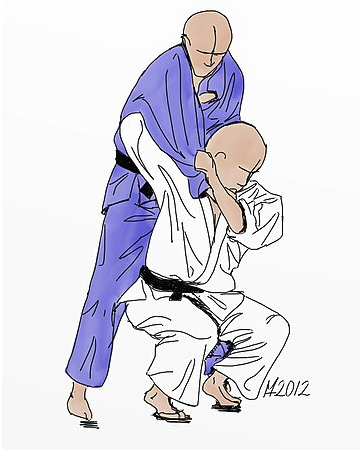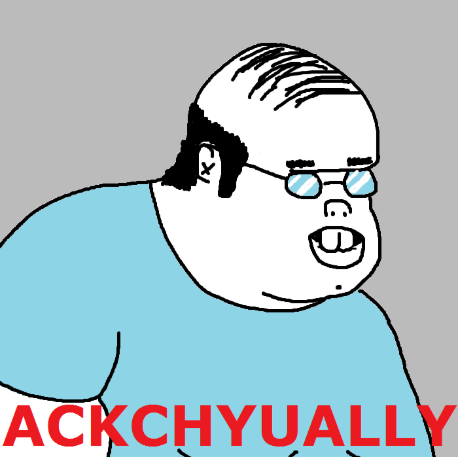Teaching My Teammates (8): Demystifying Seoi-nage
This Week’s Quiz
New Terms
Seoi-nage (背負い投げ), back-carry throw
Seoi (背負い): to carry on one’s back
Nage (投げ): throw
Ippon-seoi-nage (一本背負い投げ), one-arm back carry throw
Ippon (一本): one long cylindrical object
Morote-seoi-nage (諸手背負い投げ), two-arm back-carry throw
Moro (諸手): various, many, together
Te (手): hand
Seoi-otoshi (背負い落), back-carry drop
Seoi (背負い): to carry on one’s back
Otoshi (落): drop
Te-waza (手技), hand technique
Te (手): hand
Waza (技): technique
Eri (襟), lapel
Kata (肩), shoulder
Returning Biomechanics Terms
See Week 3 to review as needed.
Base: An abbreviation for “base of support,” all points of contact with the floor and the space between all of them.
Center of mass (CoM): In oversimplified terms, this is a person’s balance point. In standing, it’s about three to four inches deep to the lower abdomen–just in front of the sacral bone. It is a dynamic balance point and changes location depending on how a person is positioned.
Returning Judo Terms
Tori: the grabber, the person performing a throw
Uke: the receiver, the person being thrown
Ippon: one point, victory
Waza-ari: half point
Koshi or goshi: hip
Judoka: Judo player
Ne-waza: ground techniques
Renraku-waza: combination techniques in a different direction
Renzoku-waza: continuous techniques in the same direction
Kuzushi: destabilization and unbalancing: the process of pulling or pushing uke’s CoM outside of their base or shrinking their base by forcing at least one foot to disconnect from the ground
Tsukuri: the entry–the visual “identity” or “shape” of the throw
Kake: the finish of a throwing technique
Seoi-nage is NOT a “Shoulder Throw”
Let’s get one thing straight right now. Seoi-nage does not mean “shoulder throw.” It is translated as “shoulder throw” virtually everywhere on the Internet. One look at the kanji, the Japanese system of writing using Chinese logographic characters, will clarify this throw’s identity.
Seoi (背負い) directly translates to “carrying upon one’s back”–like a backpack. Google 背負い; highlight, copy, and paste it. Googling the kanji will reveal backpacks, back harnesses, and seoi-kago, a type of carrying bucket worn…where? On the back. The kanji for “shoulder” is kata (肩). The Google results of that kanji are anatomic images of the glenohumeral joint. You know, the human shoulder.
So, no, seoi-nage is not a shoulder throw. It is a back-loaded throw. I refuse to hear otherwise.
Seoi-nage (背負い投げ)
English name: back-carry throw
Korean name: 업어치기
English Transliteration: eob-eochigi
Classification: te-waza
Kuzushi direction: forward
Seoi-nage is one of those Judo throws that consistently makes highlight reels. It’s incredibly popular in Eastern Judo competition circuits, particularly in Japan and Korea. Seoi has many variations which increases its applicability across a wide variety of contexts, both inside and outside of sports competition.
To execute seoi-nage, tori first has to break uke’s balance forward (kuzushi). In the basic two-hand seoi, kuzushi is performed by pulling uke forward, toward tori, from a traditional symmetric sleeve-lapel grip. Often the lapel hand is placed one-half to one fist lower than the collarbone to facilitate the entry.
In the split second that uke’s center of mass tips toward their toes, tori drops their own center of mass somewhere between slightly or greatly below uke’s. The purpose of tori dropping their center of mass below uke is to receive uke like a backpack. Wear em’ like a baby. This drop-in, in tandem with a change of hand/arm position, is the tsukuri (entry) for seoi-nage.
The sleeve hand is pulled up and out in front of tori. The lapel hand flexes at the elbow near maximally, driving the elbow into uke’s armpit or above the biceps. This action is the second source of variation in seoi-nage. The ultimate goal of these hand actions is to continue to pull uke’s center of mass forward to facilitate hard and deliberate contact of uke’s front to tori’s back.
The tsukuri of seoi-nage.
Hultström, M. (2012). File:Morote-seoi-nage.jpg. Wikimedia Commons. https://commons.wikimedia.org/wiki/File:Morote-seoi-nage.jpg
Back-to-front contact is vital to this throw. Once uke is on tori’s back, tori’s back acts like a platform to, either slightly or greatly, lift uke’s center of mass upward and forward. The magnitude of lift is also a source of seoi-nage variation. The bottom line though is that uke’s center of mass is lifted up and forward during seoi-nage.
You may have noticed that seoi-nage is the first te-waza (hand technique) and the only te-waza in the dai ikkyo. The classification comes not from tori’s position, but rather tori’s action. The kake (finish) for seoi-nage requires tori to operate their grips similar to buckling a seatbelt. This “seatbelt” action is what rips uke up and over tori’s back to to complete the throw. The position of tori’s grips on uke is yet another source of variation in this technique.
To review, seoi-nage is a hand technique that lifts uke up and forward over tori’s back. This will be important later.
FLUID JUDO JAPAN. (2022, April 8). Master SEOI NAGE the Japanese way part 1.
YouTube. https://youtu.be/04uDd8mxW5Y?si=4clwEgXn53YSexqZ
Drop/Lift Height Seoi Variations
In terms of drop height, tori has generally three options. The belt line is often used as a heuristic for a judoka’s balance point. In the case of a shorter judoka throwing a taller player, tori may not need to drop their center of mass very much at all. This is a “high” or “shoulder” seoi-nage. (Kata-seoi-nage, 肩背負い投げ) For taller players throwing shorter players, it may be necessary to drop their hips deep underneath and forcibly elevate uke with their hips, known as a “low”, “deep”, or hip seoi variation. The use of the hip as the lifting mechanism changes the throw classification from a te-waza to a koshi-waza. (Koshi-seoi-nage, 腰背負い投げ)
The quintessential low seoi-nage that folks know and love to see is known as “drop” seoi-nage. In this variation, tori drops to their shins, knees, or the side of one hip. By connecting their centers of mass through tori’s grips, uke is pulled forward hard as tori enters the drop seoi position. This is incredibly useful for physically-weaker players yanking on bigger, stronger players: unless uke cleans, snatches, or deadlifts more than their opponent weighs and bases back or laterally far enough as tori enters–they’re likely getting thrown. At minimum, uke’s posture will be broken, exposing them for a follow-up renraku-waza, renzoku-waza, or a repeat drop seoi if tori is particularly athletic. Drop seoi is kind of a dick move if you’re a short, strong, meatball aiming to throw smaller-framed or less-experienced uke.
Always remember: uke signed the waiver. Learning to fall without injury is essential to being an uke. If you get injured from someone else’s throw, remember that you also own at least half of that equation.
Are Drop Seoi-Nage and Seoi-Otoshi the Same?
There is a lot of confusion about the nature of drop seoi-nage and seoi-otoshi (back-carry drop). Remember that for seoi-nage, uke is lifted up and over tori’s back. For seoi-otoshi, uke is ripped downward. THERE IS NO LIFTING ACTION IN SEOI-OTOSHI.
In this no-gi drop ippon-seoi-nage note that uke lands flat on tori’s back. To complete the throw tori has to lift his back and rotate to their left to “flap” uke over for the finish. This is drop seoi-nage: uke’s center of mass had to be lifted by tori to finish the throw. In this Mongolian grip seoi, note that there is a continuous downward pull. At no point does tori rise back up or pull forward after the initial kuzushi - all the energy is down and inward for the seatbelt pull as tori is dropping in. This is seoi-otoshi.
In general, most drop knee seoi-nage become seoi-otoshi in the moment. As uke learns to defend better by stopping the rotation, basing backward, or sprawling onto tori, tori has to change from seoi-otoshi to seoi-nage by lifting the combined tori-uke center of mass and pulling or running forward. But at the end of the day, uke gets thrown. Only dorks like me really care about the difference. If you want to always be correct, call any drop seoi variation simply, “drop seoi.”
For a succinct graphic on seoi-nage and its many variations, check out the chart here.
Rolling Through Throws
It is not uncommon to see competitors rolling through big turn throws in Judo. One reason for this is to add continued momentum to uke’s fall and roll them to their back to secure an ippon. Another is to avoid crashing onto uke during training in the event of overthrowing them or underthrowing a compliant partner. In my still-developing green belt opinion, care should be taken not to get rolled through and to finish with uke in a position to take tori’s back following a drop seoi. In Judo, waza-ari and subsequent transition to ne-waza are possible. I choose to avoid giving up the ippon and losing to an armlock or choke by rolling right into my opponent’s retaliatory attack.
In different games such as Brazilian Jiujitsu or MMA, choosing to roll over uke or getting rolled through is likely to result in getting your ass kicked for the same reasons. Worse yet, in a self-defense situation, exposing your back on the ground could ultimately result in loss of life. You allow your assailant to not only choke or strike you from behind your field of vision, but they can also get behind their weapon while you scramble. Multiple attackers can also hold you down or finish you off. Rolling through serves your lifespan on a silver platter. Speaking of self-defense against lethal force…
Ippon = “point” and “arm”?
The Japanese language uses certain words to count different kinds of objects. The “counter” word for longer, cylindrical objects is the word hon (本). Anything that is longer than it is wide and is somewhat cylindrical is counted with this word. Things like points, arms, and pencils are all counted with hon. When there is one long cylindrical thing, the number 1 is attached to it. Pronounced in Japanese, that word becomes ippon. So, yes, ippon means both “one point” and “one arm.”
Further Study
Kanō, J. (2013). Kodokan Judo. Kodansha America Inc.
Scott, S. (2019). The Judo Advantage: Controlling Movement with Modern Kinesiology. YMAA Publication Center.
Ohlenkamp, N. (2006). Judo Unleashed: Essential Throwing & Grappling Techniques for Intermediate to Advanced Martial Artists. McGraw-Hill.
Video Examples
Chadi
Drop Seoi-Nage is NOT Seoi-Otoshi: https://www.youtube.com/watch?v=vapBloy7i9U
フジテレビ SPORTSすぽると!
Koshi-seoi-nage: https://www.youtube.com/watch?v=jZ8ODvrGmW8
FLUID JUDO JAPAN
Master SEOI-NAGE The Japanese Way
KODOKAN
Seoi-nage: https://www.youtube.com/watch?v=zIq0xI0ogxk
Ippon-seoi-nage: https://www.youtube.com/watch?v=FQnOlCxo4oI
Seoi-otoshi: https://www.youtube.com/watch?v=vu1TMVNnq34
Jukido Academy
Ippon-seoi-nage: https://www.youtube.com/watch?v=gwWhMNfActg
Morote-seoi-nage: https://youtu.be/mjW46fipLqU?si=ks0ikRDlhCOuCrP1
Seoi-otoshi: https://www.youtube.com/watch?v=BwjM-mJ5Ek0
Seoi-otoshi, Tsugi-ashi Drilling: https://www.youtube.com/watch?v=V2_YElx7T5I
Riki Judo Dojo
Ippon-seoi-nage Tips: https://www.youtube.com/watch?v=3qb4DWvhXcM
Morote-seoi-nage Tips: https://www.youtube.com/watch?v=K9ReyUUZo4g
Morote-seoi-nage Variations: https://www.youtube.com/watch?v=62_nlyClmjg
Rochester Judo
Kata-eri-seoi-nage: https://www.youtube.com/watch?v=K-0XOlbf84o
Shintaro Higashi
Seoi-otoshi System, the Classical Japanese Way: https://www.youtube.com/watch?v=jcBDubg5Xso
Steve Scott
Eri-seoi-nage Basics: https://www.youtube.com/watch?v=kD0PKuEjoSU
Seoi-nage in Self Defense
Machete vs. Seoi-nage: https://www.youtube.com/shorts/GKVWuEbtSao








